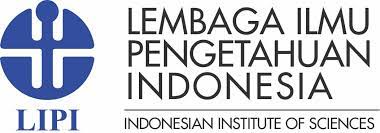PRO-KONTRA KEMUNGKINAN MELIHAT ALLAH (RU’YATULLAH) DI AKHIRAT DENGAN MATA KEPALA
Keywords:
Ru'yatullah, Ahl sunnah wal jama'ah, Mu'tazilah, ArgumentAbstract
In Islamic treasures, the discussion of the science of kalam has its own charm because it discusses typical Islamic thoughts, so that the Islamic building becomes stronger. One of the most important matters related to the science of kalam, is the possibility of seeing Allah (ru'yatullah) in the afterlife which reaps the pros and cons. For this reason, this article will examine the pros and cons of the possibility of seeing Allah in the hereafter by focusing on the study of the arguments or arguments used by both parties, then continue with the rebuttals. Based on the study of the type of library research with a critical analysis approach, it can be concluded. First, seeing Allah in the hereafter for Ahl sunnah wal jama'ah is a matter that must be believed by every human being who has many arguments and has reached the mutawatir level. Second, for the Mu'tazilah and those who agree with them, they do not believe that Allah can be seen in the hereafter, they postulate several verses of the Qur'an with their understanding of reason. Third, the arguments that negate this possibility are very weak and can be refuted by the experts of the sunnah wa jama'ah, so that the argument is weak, and vice versa, showing that the arguments of the Ahl sunnah wa jama'ah are stronger.
References
Al-Baghawi, Al-Husain bin Mas’ud. Mu’alim at-Tanzil Fi Tafsir Al-Qur’an. Beirut: Dar Ihya’ al-Turats al-’Araby, 1420.
Al-Bukhari, Muhammad bin Ismail. Shahih Al-Bukhari. Dar Thauqi al-Najah, 1422.
Al-Ghunaimi, Abdul Akhir hammad. Al-Minhah al-Ilahiyah Fii Tahdzibi Syarhu Ath-Thahawi. Beirut: Dar al-Shahabah, 1995.
Al-Naisaburi, Muslim bin Hijaj. Shahih Muslim. Beirut: Dar Ihya’ al-Turats al-’Araby, n.d.
Al-Sa’di, Abdurahman. Taisir Al-Karim Ar-Rahman Fi Tafsir Kalam al-Manan. Beirut: Muassasah al-Risalah, 2000.
Al-Shabuni, Ismail bin Abdurrahman. Aqidah As-Salaf Wa Ashabul al-Hadis. Kairo: Dar al-’Alamiyah, 2015.
Al-Zamakhsyari, Muhammad bin Amru. Al-Kasyaf ‘An Haqaiq Ghawamidh al-Tanzil. Beirut: Dar al-Kitab al-Arabi, 1407.
Al-Zawi, Al-Thahir Ahmad. Tartib Al-Qamus al-Muhith. Riyad: Dar ’Alam al-Kutub, 1996.
Anggara, Deki Ridho Adi. ‘Ru’yatu Allah Perspektif Mu’tazilah Dan Ahl al-Sunnah Wa al-Jama’ah (Studi Komparatif Tafsir al-Kassyaf Karya al-Zamakhsyary Dan Mafatih al-Ghayb Karya al-Razi)’, no. 13 (2019): 2. http://dx.doi.org/10.21111/studiquran.v3i2.2691.
Armayanto, Harda, Adib Fattah Suntoro, and Martin Putra Perdana. ‘Mutakalimin’s View Ot the Vision of Allah (Ru’yatullah)’. Santri: Journal of Pesantren and Fiqh Sosial 3, no. 1 (2022). https://doi.org/10.35878/santri.v3i1.399.
Asyqalani, Ahmad bin Ali bin Hajar al-. Fath Al-Bari. Beirut: Dar al-Ma’rifah, 1379.
Farhat, Yusuf bin Syukri. Mu’jam al-Thalib. Beirut: Dar al-Kutub al-’Arabiyah, 2007.
Ibn Katsir, Ismail bin Umar. Tafsîr Al-Qurân al-‘Adzîm. Beirut: Dâr Thayyibah li an-Nasyri wa at-Tauzî’, 1999.
Ibn Muhammad, Ahamad bin Nasir. Ru’yatullah Wa Tahqiqu al-Kalam Fiha. Makkah: Jami’ah ’Ulum Al-Qur’an, 1991.
Ibn Taimiyah, Taqiyuddin Ahmad. Majmu’ Fatawa. Saudi Arabia: Majma’ al-Mulk, 1995.
Jabbar, Abdul. Syah Usul Al-Khamsah. Maktabah Wahbah, n.d.
Krippendoff, Klaus H. Content Analysis An Introduction to Its Metodology. London: Sage Peblication, 2004.
Mandzur, Ibn. Lisân Al-‘Arab. Beirut: Dar Ihya’ al-Turats al-’Araby, 1999.
Muslih, M. Khalid, Ahmad Tauhid Mafaza, and Amir Sahidin. ‘A Critical Study On Ghaybah Of Imam Mahdi Concept In Shi’ah Imamiyah Ithna ‘Ashariyyah’ 29, no. 2 (2021): 189–204. http://dx.doi.org/10.24014/jush.v29i2.13981.
Sahidin, Amir. Mujahid Tangguh Persiapan Ilmu Syar’i Dan Tsaqafi Bagi Para Mujahid. Banyumas: PT. Pena Persada Kerta Utama, 2022.
Sahidin, Amir, and Abdul Rohman. ‘قضية خلق القرآن عند الجبرية والمعتزلة وأهل السنة : (دراسة مقارنة نقدية)’. Rausyan Fikr: Jurnal Ilmu Studi Ushuluddin Dan Filsafat 17, no. 2 (2021): 203–27. https://doi.org/10.24239/rsy.v17i2.766.
Downloads
Published
Issue
Section
License
Copyright (c) 2023 Inayah Nazahah, Amir Sahidin

This work is licensed under a Creative Commons Attribution-ShareAlike 4.0 International License.

















